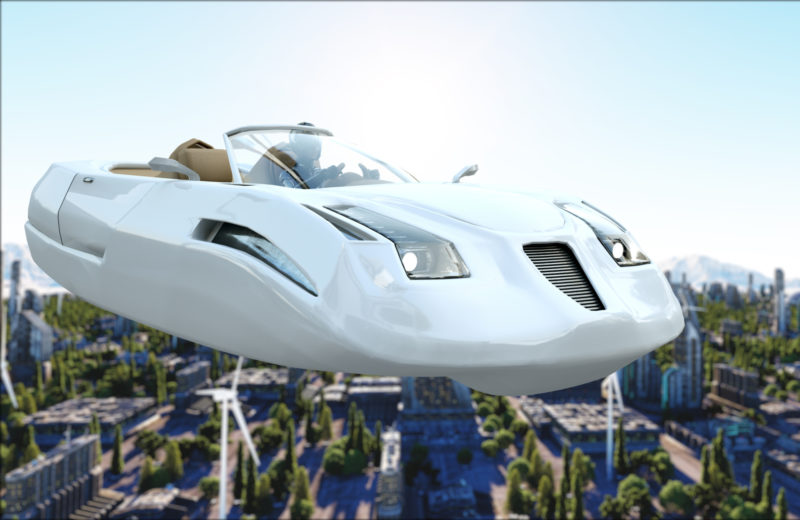Where are the Flying Cars?

We’re now two decades into the century, and as always with a year ending in zero or five, one begins to take stock of things we’ve seen, hoped to see, and detect the absence of. We’ve had a decade without a recession. Less crime, less poverty, and less homelessness, overall – and most of that without any major government policy initiatives. Computers (technology, overall) are faster, cheaper, and do more than ever before.
Saying that this is, broadly the best time in history to be alive is no idle opinion: many data points suggest exactly that.
And yet, there are disappointments.
There’s one I’ve noticed of late that is not only a perennial, but it seems to surface with renewed intensity every few years, on Twitter (and elsewhere): “It’s 2020 – where are the flying cars?” It’s a recurring theme in the same family as, “If they can put a man on the moon, why can’t they cure the common cold?” and, in some contexts, is applied as a criticism of free markets. Why have these conceptually simple, seemingly intuitive vehicles not arrived?
(I have at times attempted to explain that helicopters — a transportation concept since the late 15th century, actively under development for roughly a century, and operational since just before World War II — are intrinsically flying cars; that explanation scarcely assuages the cynics.)
Betrayal or Infeasible?
A lot of the disappointment derives from a sense of betrayal. Beyond simple entertainment, science fiction endows many of its viewers with expectations; surely, the logic goes, mankind can cure disease, send vehicles deep into space or to the deepest depths of the oceans, and undertake projects of tremendous size and scope. Considering all of this, it seems that the only explanation as to how hard should it be to create a car that flies is conspiracy.
AIER has written extensively about the difficulty of predicting innovation: a colleague and I recently noted that the last decade in crypto development may wind up having been less about new forms of money or currency than about the wallets, which have been comparatively overlooked.
Some of the reasons cited for the absence of flying cars include sophisticated fuel requirements; the lack of air traffic control infrastructure to manage them; general assertions of impracticality; and that The Simpsons haven’t yet predicted them.
While these are mostly feasible explanations to some extent or another, I would add that considering the growing abundance of Federal and state laws surrounding relatively simple drone deliveries, even if perfectly functional, efficient personal flying vehicles existed it would be years before political bureaucracies hashed out regulatory and licensure requirements.
Additionally, if the prices of personal submarines are any guide, most of the people bemoaning the absence of flying cars would, at least initially, be enjoying them only by watching from the ground below. But there is a deeper reason for which Jetsonian, bubble-topped vehicles don’t fill the skies; one that is rarely, if ever, considered.
We Don’t Need Flying Cars…
Market processes often “seek” the most direct path. When flying cars were imagined (mostly in the ‘50s and ‘60s), life itself looked different. The lure of flying personal vehicles was rooted in a desire for speed and convenience within the context of the time: to more quickly get to the supermarket, library, post office, or work while avoiding traffic jams, potholed streets, and not having to find a parking spot. But other innovations, including the internet, email, Slack, grocery & meal delivery, ride sharing apps, flexible driving solutions, dockless scooters, on-demand aviation solutions, and others, all easily accessible via mobile computing technology, mitigated the use cases of flying personal vehicles piecemeal. Flying cars thus have been created, albeit in the aggregate.
Other innovations, including self-driving vehicles, improved automatic pilot technology, and low-cost/free communication have attenuated the development of personal aviation, and thus of the long-awaited flying cars as well.
Capitalism (or “free markets,” or the “market economy,” or whatever) didn’t fail: quite the opposite, in fact. Entrepreneurs effectively provided a set of complementary goods and services, all within a competitive marketplace, to deliver all and inarguably more of the amenities which flying cars would have. The respective firms — most of which, technology ventures — aggregate, produce, and sell their inputs at a profit, which indicates that their productive processes are bringing value to consumers.
Similar trends have occurred within other industries. Indeed: a substantial part of the innovation process involves not only coming up with new ideas, but taking existing products and services and adapting them for purposes that are unintended or completely at odds with their original, specified function.
…But They’re Here Anyway
But this is all moot, and the naysayers are thwarted. Flying cars are, in fact, being developed and are within a few years of introduction. Implementations vary: some are essentially intended to be flying cars, others as self-flying or remote piloted drones.
But the lack of flying cars to this point is neither a reasonable or cogent indictment of markets or capitalism; it instead reveals the dulled sense of appreciation which individuals, living in a bounteous market (and an entertainment-rich) economy, succumb to.
Just because you can imagine something does not make it technologically or economically rational. We have good planes, good helicopters, good drones, and good cars. In the end, maybe they just need to be different things, for a while longer.











